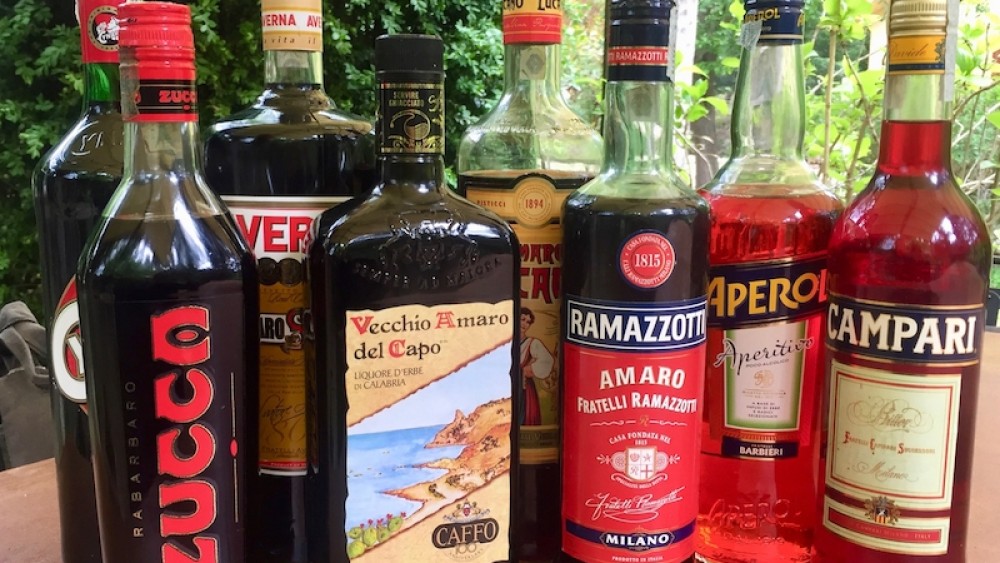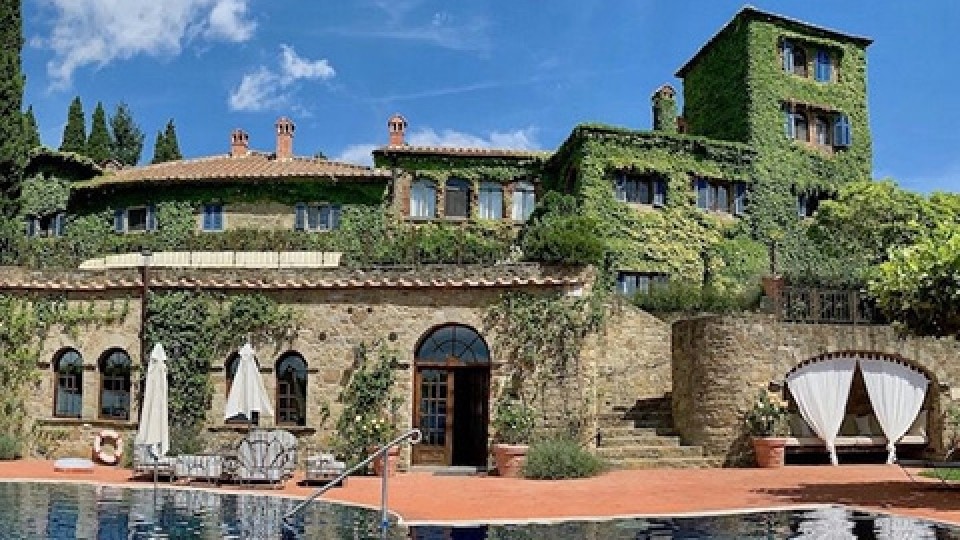We will tell you the Bitter Truth about Amari in our blog
May 5, 2017

At Tuscookany we are not only fond of Italian cooking but wine and liquors too. Learn about Italian bitters and toast with us after your Cooking Class in Tuscany.
While almost every country in Europe has their own spirits to drink as an aperitif or digestif, Italians are particularly fond of theirs, and you will most certainly be spoilt for choice here. Amaro is a true star of the Italian liquors. Although, for a long time, it was considered to be an “Old Man’s drink”, it got its second wind in recent years and gains popularity in Europe and across the Atlantic.
“Amaro” in Italian literally means “bitter”, and bitterness is indeed the integral part of any amaro liquor. Most Amaro recipes are kept secret, but they are usually made with a selection of herbs, roots, citrus peel, flowers, spices and bark, which are macerated in base alcohol. Amaro can be aged in barrels, but not all of them are. The alcohol content is not set in stone either, and Amari usually contain anything between 16% and 40% ABV.
Most Amari are drunk after meals as a digestif to help your stomach cope with the abundance of Italian cooking. Some of these herbal drinks claim to have medicinal qualities and were originated in pharmacies and monasteries. One of the oldest Amari was created in this way. Benedictine monks from Abbazia di Santo Spirito in Sicily invented Amaro Averna in the early 19th century. Its recipe was then given to a merchant Salvatore Averna as a gift for his contribution to the community and the church. Salvatore initially produced the liquor for his farmhouse guests, while his son Francesco got the Royal patent and commercialized Amaro Averna all over the country.
There are countless Amari in Italy, and almost each region produces its own Amaro, some of which are more known to the international public than others. Allora, let us have a closer look at the most famous Italian Amari.
There are two most commonly used bitters which form the base for a truly Italian aperitivo:
Campari
Origin: Novara, Piedmont
When to drink: before meals
While Campari’s recipe is kept in secret, what we know for sure is that it includes water, alcohol and a number of bitter herbs and fruit such as chinotto and cascarilla. Some traditional Italian cocktails are Campari-based, for example Americano (Campari, red vermouth and soda water) or Negroni (Campari, gin, red vermouth and orange).
Aperol
Origin: Padua, Veneto
When to drink: before meals
Among the known ingredients of the Aperol secret recipe, there are rhubarb, cinchona, bitter orange and various roots. Aperol became famous all over the world thanks to the excellent aperitif cocktail Aperol Spritz (Aperol, Prosecco and soda water).
Most Amari, however, are usually taken as digestivo and drunk neat or on the rocks (although they can also be used as cocktail ingredients):
Amaro Averna
Origin: Caltanisetta, Sicily
When to drink: after meals
The recipe was created by the Benedictine monks in the 19th century, and is based on Mediterranean herbs, roots, orange and lemon peel. It has mild bitterness and is quite sweet.
Amaro Lucano
Origin: Pisticci, Basilicata
When to drink: after meals
This dark brown amaro is a blend of more than 30 herbs and it has a distinct bittersweet taste.
Ramazzotti
Origin: Milan, Lombardy
When to drink: after meals
Ramazzotti is a blend of 33 spices, including star anise, cardamom, cloves, myrrh and orange peel. It is full-bodied, dark brown with a bittersweet. This is also the liquor most favoured by owners.
Cynar
Origin: Italy (created by a Venetian entrepreneur)
When to drink: before or after meals
Cynar is one of the youngest Italian Amari and appeared on the market only in 1950s. It is made of 13 herbs and roots, and the main ingredient is artichoke, or carciofo in Italian. The brand name originates from the artichoke’s botanical name cynara scolymus. Cynar can also be drunk as an aperitif.
Zucca
Origin: Milan, Lombardy
When to drink: before or after meals
The base ingredient for this Amaro is rhubarb, combined with other spices, roots and citrus peel. It may not be widely available on the international market, but is quite common and easily sourced in Italy. It can also be taken as an aperitif.
Fernet Branca
Origin: Milan, Lombardy
When to drink: after meals
This Amaro, created in the late 19th century, is made of a blend of different herbs, flowers and spices, including chamomile, cinnamon, aloe, saffron, rhubarb and iris.
Amaro del Capo
Origin: Capo Vaticano, Calabria
When to drink: after meals
This Amaro is lighter in style and is to be consumed ice cold. The herbal and fruit ingredients include tangerine and orange peel, chamomile, licorice, mint, anise and juniper.
Having an aperitivo or digestivo is one of those Italian drinking habits, which go side by side with taking café after every meal (careful, cappuccino can only be drunk in the morning!), or to accompany food with wine. We love this Italian drinking etiquette, and you could enjoy most of the above Amaro liquors as part of your cooking vacation with Tuscookany as well as during your eating “routine” anywhere in Italy.
We’d love to hear from you. Please feel free to comment and share our amari post with your friends.

Interested in our cooking courses at one of our Tuscan villas?
Do you want to enjoy our Tuscany cooking classes with plenty of time to explore in your free time, all while staying in an amazing villa?
Reviews
How our guests experienced the Tuscookany courses
Reviews from our former guests made about their visit to Tuscookany on TripAdvisor, facebook, Twitter, Google, Chow and Yelp.











